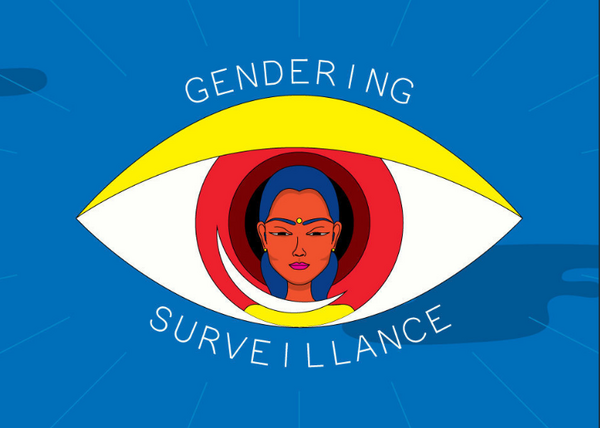
Our new research on gender and surveillance in India launched, on a dedicated website!
A report by
Anja Kovacs & Nayantara Ranganathan
Abstract
In two theoretical pieces and three case studies combined on one new website, genderingsurveillance.in, we highlight a range of different ways in which gender, technology and surveillance intersect.
NEW DELHI — News about the ever expanding surveillance powers of the Indian government and its agencies seems to be hitting the headlines every day. Concerns about everything from corporates to schemes such as Aadhaar facilitating mass surveillance are raised again and again. But most people seem to think that this is not something that affects them. If you have not done anything wrong, you have nothing to hide, right?
Not quite. And as they have always been under stringent surveillance, women would know. In new research the Internet Democracy Project uses a gender lens to bring home how the harms of indiscriminate surveillance, and the normalisation of such surveillance, affect all of us, as they construct safety as a prize for following rules and restrictions while shaping our behaviour in insidious ways. In turn, the research shows how gendering surveillance also brings out questions and dimensions that don’t always get enough attention in the debate.
In two theoretical pieces and three case studies combined on one new website, genderingsurveillance.in, a range of different ways in which gender, technology and surveillance intersect are highlighted.
-
One case study shows, for example, how widespread anxiety about (and restrictions on) the use of mobile phones by young unmarried women in rural north India is driven by concerns about the breakdown of existing systems of social surveillance that this technology facilitates.
-
A second case study found that most of the women’s safety apps that are currently flooding app stores undermine women’s autonomy while taking valuable focus away from more sustainable and empowering solutions.
-
A third case study highlights that there needs to be more accountability in the use of CCTV cameras deployed by both public and private authorities (such as workplaces) to move forward in debates about their necessity and effectiveness and to ultimately democratise the benefits they might bring.
The thread that runs through all of this work is this: surveillance is really about power and how power relations are structured. Dr. Anja Kovacs, Director of the Internet Democracy Project, noted, ‘what this work highlights is that the effects of surveillance are never merely personal; they are structural. And for that reason, surveillance is not merely a matter of personal privacy, but of social justice. It is at that level that we need to start having the debate about surveillance in the digital age’. Nayantara Ranganathan, Program Manager Freedom of Expression at the Internet Democracy Project, said, ‘by broadening our lens like this, we can see where and how checks and balances need to be deployed, and in that way bring more balance into the debate again. The unbridled securitisation of our societies needs to stop’.